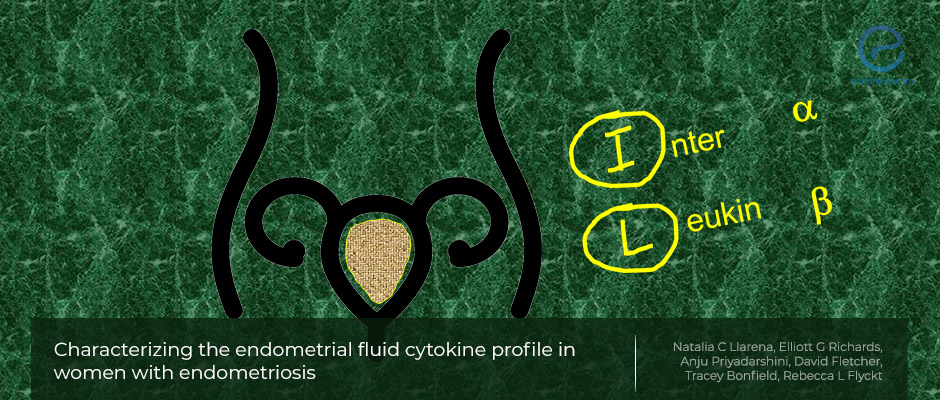Endometrial fluid analysis as a new diagnostic test for endometriosis diagnosis
Nov 11, 2020
Endometrial fluid analysis for minimal invasive endometriosis diagnosis
Key Points
Highlights:
- Women with moderate-to-severe endometriosis have an altered profile of cytokines in the endometrial fluid, however, the analysis does not predict minimal and mild disease
Importance:
- The research found a minimally invasive, easy, and safe prediction test for endometriosis by showing the cytokine alterations in the endometrial fluid of patients with moderate and severe disease.
What's done here:
- Sixty premenopausal women between the ages of 18 -45 and had an indication for laparoscopic surgery for benign diseases were included in the study.
- After anesthesia induction, and 0.5 cc saline infusion into the endometrial cavity, endometrial fluid was aspirated with an embryo catheter.
- The aspirates were stored at -80 °C until the cytokine assay.
- The surgical stages and menstrual cycle days of all women were recorded, Cytokine levels were analyzed using Luminex multiplex assay systems.
Key Results:
- Nineteen patients had stage 3–4 endometriosis,19 patients had stage 1–2 disease, and 22 women had no endometriosis.
- Mean cytokine levels in correspondence with the endometriosis stage did not show any difference in minimal and mild disease patients compared to controls.
- The levels of IL1α and IL-6 were elevated in women with severe and moderate disease by 2-6 folds, while the increased levels of IL-1β and IL-8 could not reach a statistical significance.
- Logistic regression analysis maintained a model with the best predictive capacity with IL-1α, IL-1β, and IL-6 combination and a sensitivity/specificity with 75% and 70% respectively.
- When an analysis was applied for menstrual cycle phases TNF alfa levels differed in the control group, but no significant change was determined in the endometriosis group.
Limitations:
- There might be different factors including stress and individualized anesthetic application that might affect the cytokine levels of each patient
- The relatively small number of patients included seems to prevent the researchers to do a logistic regression analysis for menstrual cycle phases and its effects on the study.
- The results indicated an alteration only in severe disease patients while the roughest to diagnose patients were minimal and mild disease patients.
Lay Summary
There is still a huge demand for finding a minimally invasive diagnostic test for endometriosis and yet none has been defined properly.
The present study which was conducted in Cleveland Clinic by Natalia C. Llarena et al between March 2017 and October 2018 searched for the answer to this ever-going question and analyzed the cytokine profile for endometrial aspirates.
The authors analyzed 60 patients including healthy controls and endometriosis patients while excluding any patients who have reasons for the potentially high levels of cytokines. The procedure was done after anesthesia induction with an embryo catheter placed inside the endometrial cavity and the aspiration material was sent for Luminex analysis. The ASRM surgical stages and menstrual cycle dates were also recorded.
The logistic regression analysis helped the researchers to produce a prediction model for severe and moderate endometriosis by using IL-1α, IL-1β, and IL-6 with a sensitivity/specificity index of 75% and 70% respectively. The menstrual cycle dates found to be ineffective in the analysis of endometriosis patients.
The study made a good step to find an easy and safe diagnostic test for severe endometriosis patients while it has not helped to diagnose patients with the mild and minimal disease who are the most difficult ones to diagnose.
The results need to be repeated and improved in larger cohorts to make the tool useful for endometriosis and maybe even for other endometrial diseases.
Research Source: https://pubmed.ncbi.nlm.nih.gov/33128115/
endometriosis endometrial fluid cytokines IL-1α IL-1β IL-6 TNF-α

